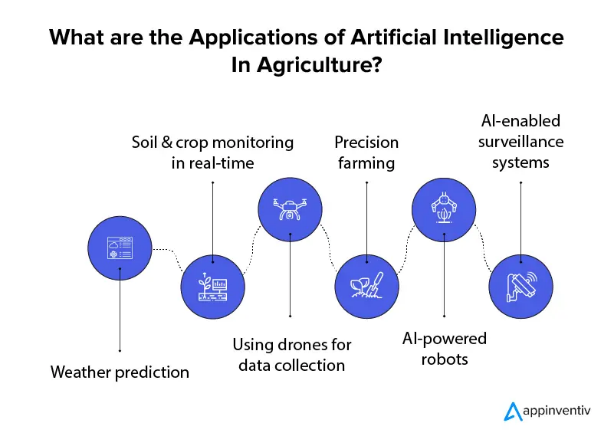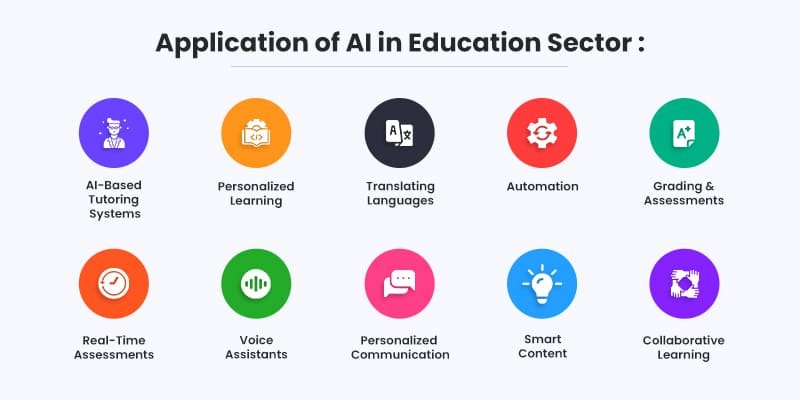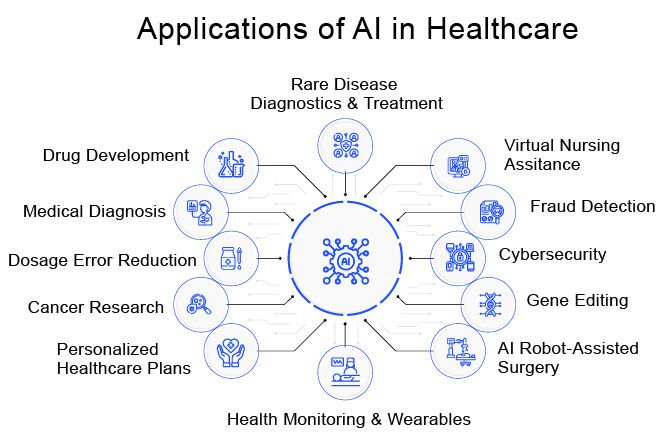Introduction
AI innovations in developing countries contribute significantly to the fostering of growth and generation of employment opportunities, particularly within the technology sector. By leveraging AI, these startups not only align themselves with development objectives but also uphold principles of fairness and sustainability while driving economic progress. The incorporation of AI aids these countries in enhancing resource efficiency, minimizing waste, managing carbon emissions, and advancing the creation of technologies. Undoubtedly, these efforts greatly contribute to emerging trends like ESG initiatives and the pursuit of zero carbon ambitions.
There are various types of startups that are developing solutions for several types of sectors, which mainly include:

The combination of agriculture and technology has led to the emergence of what’re known as ” Smart Farms.” These farms operate using technologies, like intelligence (AI) precision farming techniques, automation tools and data analytics to modernize traditional farming methods. By incorporating these technologies smart farms are changing how we grow crops and raise livestock making the process accurate data-oriented and efficient.
A smart farm, also known as a precision or digital farm is a farming system that utilizes data and technology to optimize operations. It involves real-time data collection on aspects of farming such, as weather conditions, crop growth, animal health, and soil moisture levels through the use of sensors, tools, and software. This collected data is then analyzed to aid in decision-making and automate tasks on the farm.
Artificial Intelligence (AI) plays a role in revolutionizing farming. It refers to computer programs that have the ability to learn, solve problems make decisions, and understand language tasks that typically require intelligence. AI serves as a component in enhancing productivity, within farm operations.
Benefits of AI in Agriculture
Boosting output and work speed
Implementing AI in farming or agriculture mainly serves to enhance yields and streamline processes. By utilizing AI-enhanced equipment such as drones, robots, and sensors, farming professionals can easily gather data. This information obtained about crop health helps protect the crops from diseases, adapt to various weather patterns, and ensure the soil remains in good condition.
Smart Farming
This farming approach uses tech to focus on certain field spots instead of taking on the whole field. What does this mean for farmers? Savings! Savings on water, fertilizers, and pesticide waste. How? By using AI tech, automated watering systems, and intelligent sprayers. These can find pesky weeds and bugs, and get them gone. This turns farming into a more perfect, efficient process.
Forecasting Analysis
By employing past and analytical facts acquired from the sensors placed in the field, AI systems and procedures can thoroughly project weather changes and catastrophes such as drought or floods. Farmers, using this, can make educated choices about what crops to plant. This aligns with future weather conditions during seed planting time.
Healthcare
AI has the potential to match or even exceed human capability in important healthcare tasks, like disease diagnosis. Algorithms are already surpassing radiologists in detecting cancerous tumors and aiding researchers in creating groups for expensive clinical trials. However, due to various factors, it will likely take many years before AI completely replaces humans in all areas of medical processes. In this article, we explore the possibilities of using AI for automated care while addressing the challenges that hinder its rapid implementation in healthcare.
Personalized medicine is a field that utilizes AI to analyze individuals’ genetic data. By doing so, it allows for the development of customized treatment plans for patients. One example of this is 54gene, a Nigerian startup that focuses on analyzing genetic data from African populations. Through their AI-powered approach, they aim to create personalized healthcare solutions.
Project InnerEye, developed by Microsoft Health Futures, utilizes advanced machine learning technology to create revolutionary tools for analyzing threedimensional medical images. This research endeavor aims to make AI in medical image analysis more accessible and efficient. By leveraging the capabilities of Microsoft Azure, InnerEye empowers researchers, hospitals, life science organizations, and healthcare providers to develop their own AI models for medical imaging. Project InnerEye builds on extensive research in computer vision and machine learning.
It utilizes advanced techniques, including Convolutional Neural Networks, to automatically segment medical images at a detailed level. This technology enables precise analysis and understanding of the images.
Finance
There is also AI causing a revolution in the financial industry thus bringing services to the unbanked communities. To expand and strengthen their operations, farmers need credit and insurance. In traditional lending practices, risk assessment for loans and collateral valuation necessitates numerous bank branches and insurance agents servicing large rural areas.
However, this approach is often costly and rarely profitable, leading to most remote parts of the world having no access to these facilities. By eliminating the demand for costly infrastructure via AI and digital technologies, these problems may be addressed.
Credit Scoring and microloans: By using AI in credit scoring, we can produce more accurate, personalized offers by just using many different data and features. A machine learning model that uses about 200 variables and a plethora of information to create a holistic view of the customer’s actions is an improvement from traditional credit scoring models where 10 or so characteristics are used to award scores and determine the credit score for each client.

Additionally, ML models now rely on new data sources such as Open Banking.
This leads to the development of self-calibrating models that “can learn patterns and variances online as the data is streamed [that]…can be used for outlier detection, [which often serves] as a strong proxy for financial crime events… Thus, these models may not only be leveraged on a continuous inflow of data to make up for lack of historic data (i.e., credit history), but also benefit from constant refreshment and refining that raises their forecasting power.” AI Models have an automated selection of explanatory variables and the ability to assess complex interactions between them, unlike traditional or static models.
Financial Fraud detection
These systems in artificial intelligence can undergo training using historical data, thereby enhancing their accuracy and effectiveness progressively. AI-powered fraud detection systems possess a crucial advantage: they can detect exceedingly complex fraudulent activities that traditional rule-based systems find challenging to identify. These sophisticated frauds encompass not only accounts and devices but also span numerous other areas; furthermore, AI technology enables the discovery of pervasive misdeeds across diverse media – including online platforms and personal communication channels.
AI-driven financial fraud detection systems also operate in real-time; crucially, they can identify potential off-card fraud within a few milliseconds earlier than other methods. Nonetheless–despite their impressive capabilities–these systems are not immune to errors: they might produce false positives or false negatives, leading to inaccuracies.

Education
AI-based learning systems could provide professors with valuable information about their students’ learning styles, abilities, and progress. These technologies may also suggest ways to personalize teaching methods based on the individual needs of each student. Consequently, every student would relish a unique educational approach meticulously tailored to his or her aptitudes and requirements; this personalized experience might directly boost their motivation, significantly reducing dropout rates in the process. Professors may also gain a deeper comprehension of each student’s learning process; this understanding could enhance their teaching effectiveness.
Personalized Learning
Khan Academy
This platform furnishes students with personalized learning pathways and adaptive exercises; thus, they can learn at their preferred pace – mastering each concept before progressing further.
India’s Mindspark employs artificial intelligence
it formulates personalized learning strategies for rural students, mitigating their educational deficiencies and elevating academic outcomes.
The mobile app Ustad Mobile (Pakistan) utilizes artificial intelligence: it delivers personalized tutoring and learning content–a resource that transcends geographical barriers. Consequently, this innovative approach enhances access to quality education for students in underserved communities.
Adaptive learning systems
Student data and performance undergo analysis by AI algorithms; subsequently, the difficulty of learning materials is adjusted and individual needs are addressed with targeted support. This process guarantees an appropriate level of challenge for students furthermore ensuring they receive the necessary aid to succeed.
DreamBox Learning, a platform utilized in multiple countries, employs Artificial Intelligence: it personalizes mathematics education for students by offering adaptive learning pathways and providing targeted interventions–thus enhancing their mathematical skills.
China’s Squirrel AI Learning platform utilizes artificial intelligence to personalize student’s English language learning. The platform offers interactive exercises and provides feedback that is specifically tailored to each individual’s needs.
Bridge International Academies, operating in multiple countries, leverages AI-powered personalized learning platforms: the aim is to enhance student engagement and elevate academic performance.
Conclusion
In the developing world, AI emerges as a potent tool to confront local challenges; it propels economic growth and enhances the lives of millions. Innovations in AI pave pathways towards sustainability and equity–from precision agriculture to early disease detection, personalized learning, and financial inclusion.
Several factors fuel the success of AI-driven solutions in developing countries: increased technology access, a burgeoning pool of skilled professionals, and government support – all underpinned by an acute focus on addressing local needs. Challenges persist nonetheless; these encompass issues such as data accessibility and privacy; limitations in infrastructure; and talent gaps – along with ethical considerations.
Governments, private sectors, academia, and civil society must collaboratively address these challenges. We can fully harness AI’s potential for positive global South transformation by investing in infrastructure; fostering digital literacy; and developing ethical frameworks for AI development – all while ensuring equitable technology access.
While AI doesn’t serve as a universal solution, it does promise substantial potential: accelerating progression towards the Sustainable Development Goals and fostering an inclusive, prosperous future for all. Embracing responsible—yet inclusive—development of AI unlocks unprecedented opportunities; notably among developing countries globally–ushering them into a new era marked by opportunity and progress.





